Wandering through Zamora's cobblestone streets, I felt like I'd stepped back in time as I explored its stunning Romanesque churches. The sandstone's warm glow, the intricate arches, and the detailed sculptures of San Pedro, San Magdalena, and Santo Tomé whispered stories of centuries past. As I gazed upon the gilded altarpieces, bathed in soft light, I gained a deeper appreciation for the city's rich cultural heritage. I lost myself in the beauty and history of these architectural masterpieces, and I knew there was still so much more to uncover about Zamora's lasting legacy and its hidden gems.
Historical Significance of Zamora
Zamora's historical significance is palpable in every corner of the city, where the echoes of the seven-month siege of 1072 and the dramatic power struggles during the War of the Castilian Succession in the 15th century still resonate. As I wandered through the ancient streets, I felt the weight of its storied past. Perched on a strategic bluff over the Douro River, Zamora's position in Castilla y León made it a coveted prize, a fact immortalized in the Spanish saying, 'No se ganó Zamora en una hora.'
The city's rich history is woven from conflicts and power struggles, each leaving its mark. Walking through Zamora feels like stepping into the Middle Ages, where every stone and archway whispers tales of valor and resilience. The Romanesque churches, such as the majestic San Pedro, stand as silent witnesses to these tumultuous times. These architectural marvels, particularly the 24 Romanesque churches from the 12th and 13th centuries, speak to the city's resilience and artistic heritage.
Zamora's story is one of endurance and beauty, etched in the stones of its churches and the hearts of its people. History isn't just remembered here – it's lived and breathed in every aspect of the city.
Key Romanesque Churches
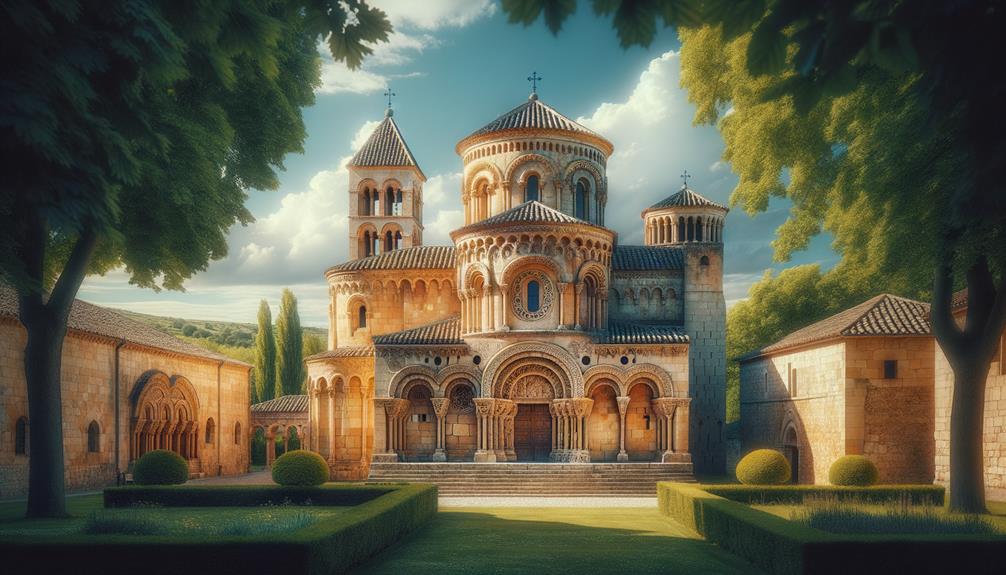
Among Zamora's treasures, the Romanesque churches like San Pedro and San Magdalena draw you in with their ancient charm and historical depth. Walking through these 11th-century marvels, I felt a strong connection to the past. It's as if the stones themselves whispered stories of medieval pilgrims and local worshippers.
- San Pedro: Located near the cathedral, this church dates back to the 11th century. Its ancient walls are steeped in history, making it a must-see.
- San Magdalena: Also near the cathedral, San Magdalena's intricate details and peaceful atmosphere left me in awe.
- Santo Tomé: This 12th-century gem now houses the Diocesan Museum. Without the distraction of photography, I could fully absorb the contemplative atmosphere.
- San Vicente: With its notable tower, San Vicente stands proudly near Zamora's third set of walls, a testament to the city's fortified past.
The Romanesque tapestry in Zamora is further enriched by Santiago del Burgo, with its peaceful ambiance and welcoming space for prayer requests, and San Cipriano, which retains its austere beauty and original wall paintings. Each church in Zamora tells a unique story, weaving a rich cultural fabric that invites exploration and reflection.
Architectural Highlights
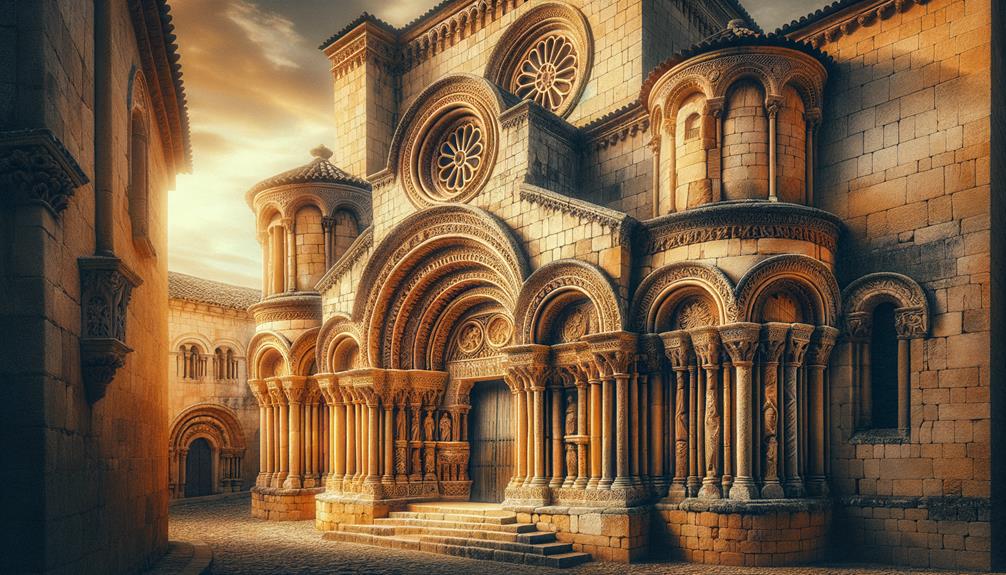
Exploring the architectural highlights of Zamora's Romanesque churches, I was struck by the timeless beauty and structural genius of the semicircular arches and barrel vaults. As I wandered through Zamora's old town, I visited the church of San Pedro and the church of Santa María, each one echoing with history and artistry.
The thick walls of these churches provide a sense of permanence and protection, while the narrow windows allow natural light to filter in, illuminating the interiors. Detailed column capitals and intricate sculptures tell the stories of Christ's life, capturing late-medieval architectural trends in stone. The warm, inviting color of the sandstone used in the construction adds to the buildings' charm.
In the church of San Pedro, I was drawn to the ornate gilded altarpieces, a testament to the Gothic era transformations that some structures underwent. Meanwhile, the church of Santa María boasts stunning barrel vaults that draw the eye upward, inviting contemplation and awe. Each visit felt like stepping back in time, as the Romanesque architecture of Zamora's churches offers a vivid glimpse into the past, blending beauty, spirituality, and history seamlessly.
Cultural Heritage Sites
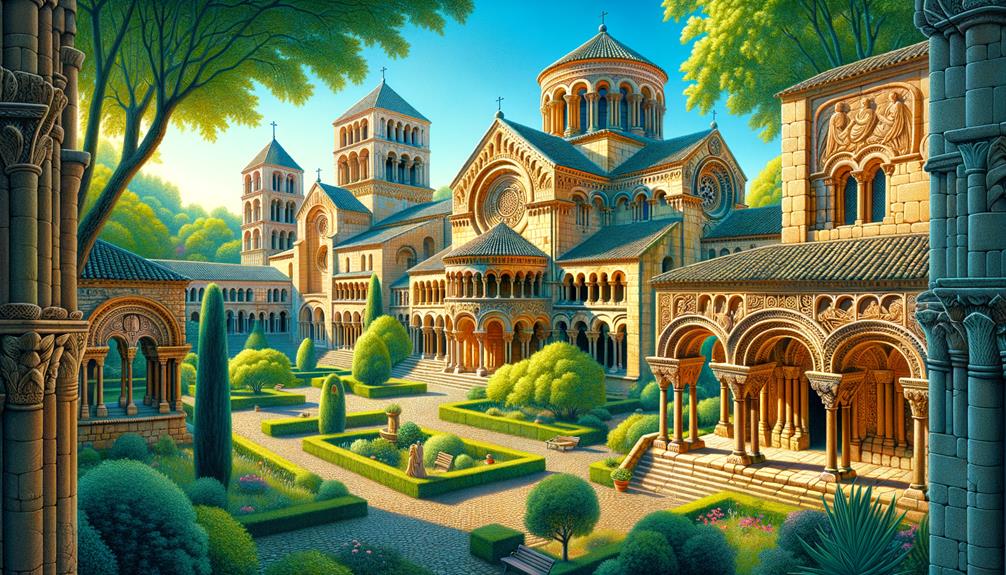
Walking out of the church of Santa María, I was excited to explore more of Zamora's cultural heritage sites, which are a treasure trove of history and artistry. The city boasts an impressive 24 Romanesque churches from the 12th and 13th centuries, each one unique and fascinating.
I couldn't resist starting with San Pedro. Its serene atmosphere and historical significance drew me in, connecting me to centuries past. Next, I visited San Magdalena, where the intricate architectural details left me mesmerized, showcasing the exceptional craftsmanship of a bygone era.
San Cipriano, with its austere Romanesque style, offered a striking contrast. Its simplicity spoke volumes, paying tribute to the era's deep spiritual devotion. Meanwhile, San Isidoro del Carmen stood as a fascinating blend of different architectural periods, a true cultural fusion.
To make my journey easier, I compiled a list of must-visit churches:
San Pedro y San Ildefonso stands out for its architectural marvels.
Santo Tomé is now a Diocesan Museum, offering a glimpse into the past.
San Vicente is famous for its impressive tower, a notable landmark.
Santiago del Burgo invites exploration of Zamora's rich history.
Each church in Zamora is a chapter in a grand historical book, waiting to be explored and appreciated.
Exploring Zamora's Streets
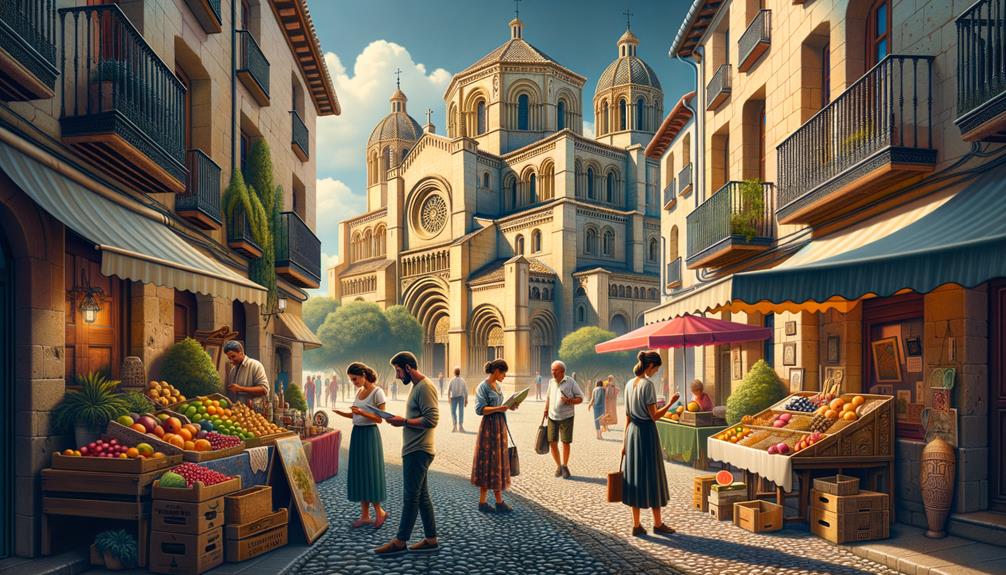
Strolling down Zamora's charming streets, like Calle de Ramos Carrión, I felt like I was stepping back in time. Each corner revealed another layer of the city's rich Romanesque heritage. The cobblestone paths of Calle Rúa los Francos led me towards historic churches and architectural wonders, their stone facades whispering stories from centuries past.
As I wandered, the Plaza de Viriato emerged, a vibrant square where the past and present blend. Locals and visitors gather here, their footsteps echoing the cultural and historical significance of Zamora's streets. The intricate details of the Romanesque churches, like the majestic San Pedro y San, stood as a testament to the city's enduring legacy.
Every turn brought new discoveries. Narrow alleys opened into expansive plazas, each space a canvas painted with history. The Romanesque architecture, with its rounded arches and sturdy structures, spoke to a time when craftsmanship was an art form. Walking through Zamora's streets was an immersive experience, a journey into the soul of a city that deeply values its heritage. Every step was a reminder of the beauty found in preserving the past while embracing the present.
Local Cuisine and Experiences
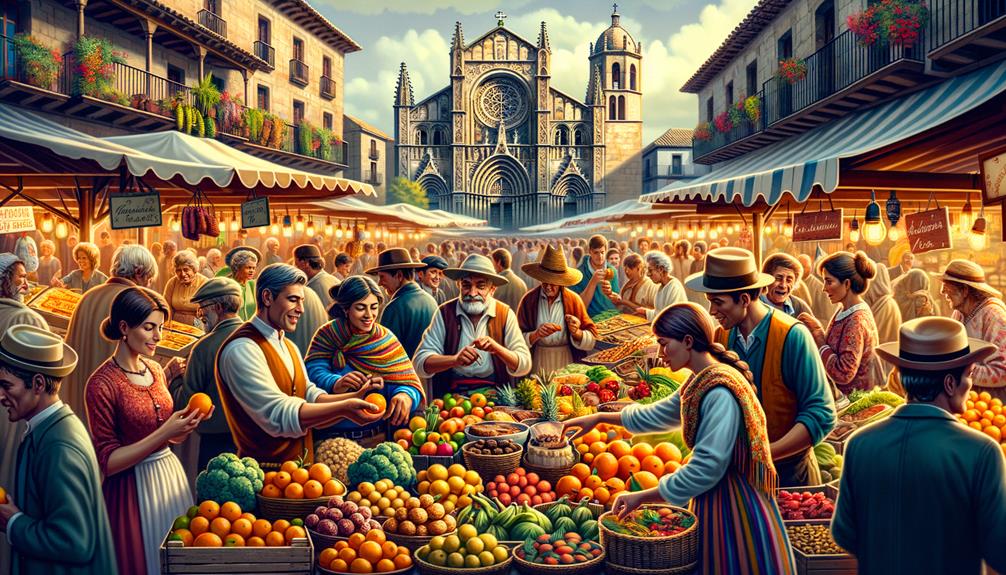
Savoring traditional Zamora cuisine at Plaza Mayor, I felt a deep connection to the city's culinary heritage. The bustling square, surrounded by stunning Modernist buildings, provided the perfect backdrop for enjoying delectable tapas. As I indulged in locally-sourced dishes, the vibrant atmosphere of Plaza Mayor brought the city's history and culture to life.
Zamora offers a wealth of local experiences beyond its culinary delights. You can:
Visit the Museum of Holy Week to gain insight into the city's religious traditions and marvel at the intricate religious imagery on display.
Explore Zamora's impressive architectural heritage by visiting Romanesque churches like Santa María la Nueva, which are beautifully illuminated both day and night.
Take a stroll to admire the city's early 20th-century Modernist buildings, which add a unique charm to Zamora's streets.
Enjoy traditional cuisine at various eateries around Plaza Mayor, where you can savor tapas and other local dishes.
Every corner of Zamora tells a story, and experiencing its local cuisine and cultural landmarks has given me a profound appreciation for the city's rich heritage. Whether you're a history buff or a foodie, Zamora offers a wealth of experiences that will leave a lasting impression.



